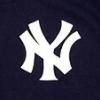-
Posts
26979 -
Joined
-
Days Won
82
Content Type
Profiles
Forums
Downloads
Everything posted by Yankee4Life
-
4 out of 10, 83 seconds. These questions were impossible.
-
I hope he's going to be okay also.
-
I did not see that one coming but then I should have.
-
7 out of 10, 51 seconds. I don't know rugby questions and I never will.
-
No Jim, I didn’t I have not watched any game since the last game of the Oakland series. I completely missed the Angels and Rays series because I don’t want to be upset anymore. But I have been keeping up with them on the N.Y. Post website and the highlights from the MLB account. Montas did do a great job yesterday and was thrilled to see that. I’m pulling for him to be productive for the Yankees. I saw Sanchez’ home run on a replay just now and as you and I both know when he gets a hold of one it will go a long way. I did yell out when he struck out in the ninth. We both know he does that a lot too. Is Stanton hurt?
-
4 out of 10, 90 seconds. What an awful day. Just terrible.
-
All I want to know is what the **** does Donaldson think is so funny? This team has not played good baseball in two months, he's not hitting worth a lick, he made two errors in one inning on Friday night and yet he still can make jokes with the opposing pitcher?
-
9 out of 10, 50 seconds. Looks good but it really wasn't.
-
I like Clarke Schmidt and I think he can be a pretty good pitcher but the way the Yankees have been hitting they wouldn't win if they had Walter Johnson on the mound. And I think you're right. They are showing that they have no backbone and that is very painful to say. They look like they quit as soon as Tampa Bay got there first run.
-
9 out of 10, 59 seconds. I missed the All-Star question. A trick question.
-
I don't know if they will win it or not. I hope so and I want to be proven wrong after being so frustrated and impatient for so long. Maybe Jim has the right approach because he doesn't seem to let this bother him. I mean, I am thinking that's the right way. What the heck, it's not like we actually can do anything about this.
-
10 out of 10, 48 seconds. These were very easy ones and I'm glad I did not get tricked on any of them.
-
I don’t pay attention to what Boone has said for a very long time except to say that whatever he says is the company line and he never states the truth. I still have MLB tv but I don’t use it to follow the Yankees. Believe it or not lately I have been watching Baltimore because they are a team (like everyone else in baseball) that has been playing well and has been doing everything right to win games.
-
I didn’t watch the game either. In fact I didn’t watch the entire Angels series. But even though I didn’t watch it I honestly can not blame Cole. I mean how? A quick look at the box score shows that the Yankees did not hit -again! They collected three hits in the game. That’s it! A pitcher has to be almost perfect to win the way the Yankees are playing. Cole was shutting them down and then one mistake happens and a one run lead against this Yankee offense may as well be a twenty run lead with the way they are hitting. I am not a Yankee hater. I am disgusted with the way they have been playing and I don’t want to pretend that everything is ok when it isn’t. Something is the matter with them to have them play this bad for so long of a stretch and I think it starts with Boone.
-
6 out of 10, 53 seconds. I'd of done better doing this one with my eyes closed.
-
6 out of 10, 77 seconds. Bad showing today and I deserved it.
-
That's the guy. He was a good golfer.
-
I was reading the New York Post and I found out they signed a pitcher that the Tigers let go by the name of Chi Chi Gonzalez. When I first heard the name I thought of the golfer. He was in their minor league team in Triple-A. The 30-year-old right-hander has a 6.87 ERA in 18 ⅓ innings with the Twins and Brewers this season. This ought to be good.
-
I am guilty in here of saying that I am not going to watch the game, that I am through with them, etc, etc and then the next day I come in and talk about the game as if I watched it and the truth is I did. Not last night. I went to bed early, didn’t check the score before I turned off the light and did not find out who won until I came in here today and read your post about them losing. I am telling you it was wonderful and I really suggest you try it. Walk the hell away from this team because all they will do is make you mad. I mean DAMN, they lose last night and I read myself to sleep reading a book about Red Barber. It is literally like having a two-ton weight off my back. I wasn’t upset last night wondering if they will win and mad this morning when they didn't. I felt good. And I want more of this. Those losers are on their own. I may even drive down to the lake tonight and watch the boats and enjoy the breeze. What a feeling not having to look at Aaron Boone!!
-
8 out of 10, 55 seconds. Thank God there were baseball questions in this one.
-
How we got stuck with this moron is beyond me.
-
6 out of 10, 66 seconds. When I am terrible I really am terrible!
-
Who the hell is Anthony Banda???
-
Ah, son of a $%#*&. Here we go again. And people still wonder why we get all over this team. These idiots know how to pack it in like nobody's business. Boone and his excuses need to go.
-
You don’t have to point out my bias towards the Red Sox or their fans. I freely admit it. However I do not have a bias against the entire city of Boston or the state itself. I know I make it sound like that at times but I really don’t. Not everyone in Boston is a baseball fan and the same can be said about people living in that state. I’ve been to Boston many times in the 80’s and 90’s wearing a Yankee hat and shirt and I was not bothered once. The reason why I brought up the interleague play thing is that I did read somewhere when it first started that it was partly Boston’s idea. If that is accurate or not is something I can not confirm. But it is not the Red Sox’ fault for the new schedule, added teams for the playoffs, the ghost runner, not being able to slide into home, the clock on the pitcher, etc, etc. Blame that on Manfred and the rule makers. I have not forgotten the few fans who threw batteries from the Yankee Stadium bleachers back then. I also remember Mickey Rivers having to wear a batting helmet in centerfield while playing in Fenway. I distance myself from people like that because I don’t do that stuff. I want to see Boston lose and lose big but I am not going to involve myself by doing something to the players. So do I think they are the root of all evil? You haven’t been paying close attention because I really don’t think that. True story: I went to as minor league game in 2005 and some guy had a Red Sox t-shirt on. I was in line to get a coke and someone walked behind him and yelled to him “you got lucky” because of Boston’s World Series win in 2004 and then he slapped the guy in the head and walked away. He hit him hard Jim and the guy was leaning up against a wall trying to get his bearings. Well, I left the line and put my arm around his shoulders and led him to some seats and stayed there with him until he was ok. No big deal, that’s just how you do things. This guy was not the reason why Boston won and the Yankees lost. They lost because of Kevin Brown and Javier Vazquez, who did nothing all season and choked in game seven. I may dislike the team but that’s where I draw the line. Chapman just may have pitched himself off the team after the season is done.



